Lechon Liempo: Perfect Filipino Crispy Stuffed Pork Belly
Have we got a treat for you today! This method for savory, tender, juicy, meaty, flavorful, crisp-skinned pork belly, rolled and cooked to mouth-watering perfection comes to us from the Philippines, and is one of the tastiest things we’ve cooked in our demo kitchen in some time—which is saying something. Lechon Liempo, a beautiful Filipino dish of roasted pork belly, is wonderfully straightforward, and outstandingly delicious. And if you use some thermal thinking, it’s also easy to get right. Let’s take a look.
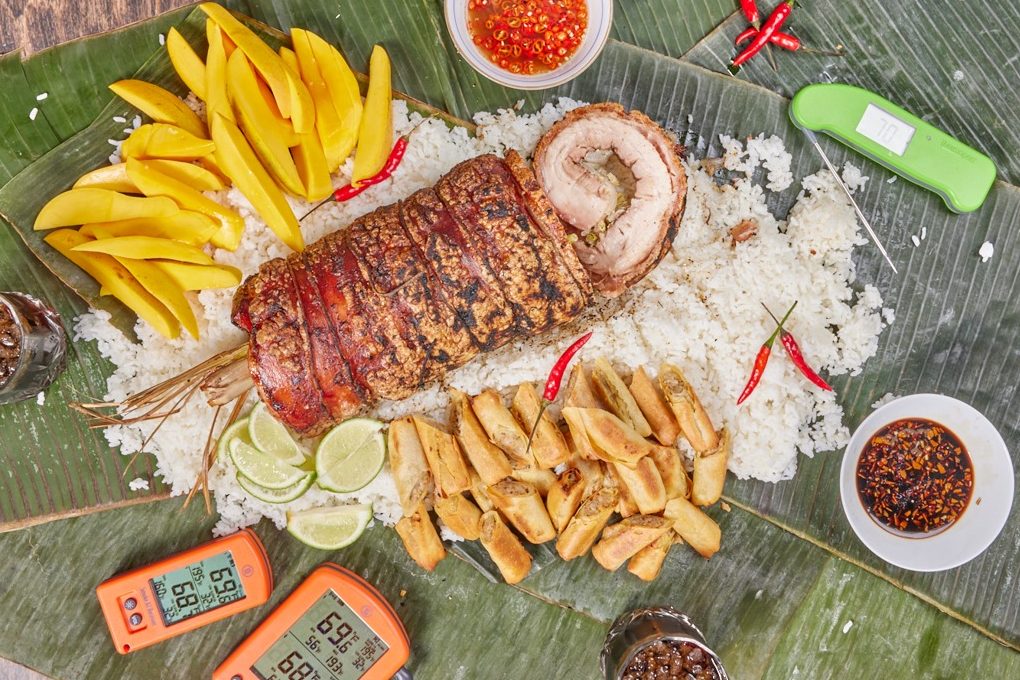
What is Lechon Liempo?
Lechon (or letson, or litson) is a roasted whole pig, a traditional celebration dish in the Philippines. Liempo, however, is the word for pork belly. So this dish is pork belly, cooked in the style of a whole hog—which is to say that it is roasted on a spit over coals.
Lechon is most often served as part of a large celebratory meal, but that doesn’t mean that you can’t make liempo for a small weekend gathering—or just for your family, probably with some leftovers. It is traditionally always served with copious amounts of rice (it is a popular ulam, which translates as “things you eat with rice,” a reference to the central role of rice in the cuisine) as well as garlicky soy sauce and chili-spiked vinegar for dipping, and a whole host of other sides.
How Filipino Lechon Liempo is Cooked
Traditionally, all lechon liempo, is cooked—skin-on—on a spit over a bed of live coals. The in-the-heat/out-of-the-heat cooking of a spit helps to cook the dish evenly, providing time for heat penetration to melt the abundant collagen in the skin and meat and denature it into gelatin, making it oh-so-tender and not a little sticky in the hands. It also allows the abundant subcutaneous and intramuscular fat to render. The low cooking also lets any seasonings that have been applied to the pork to soak in and reach maximum tastiness.
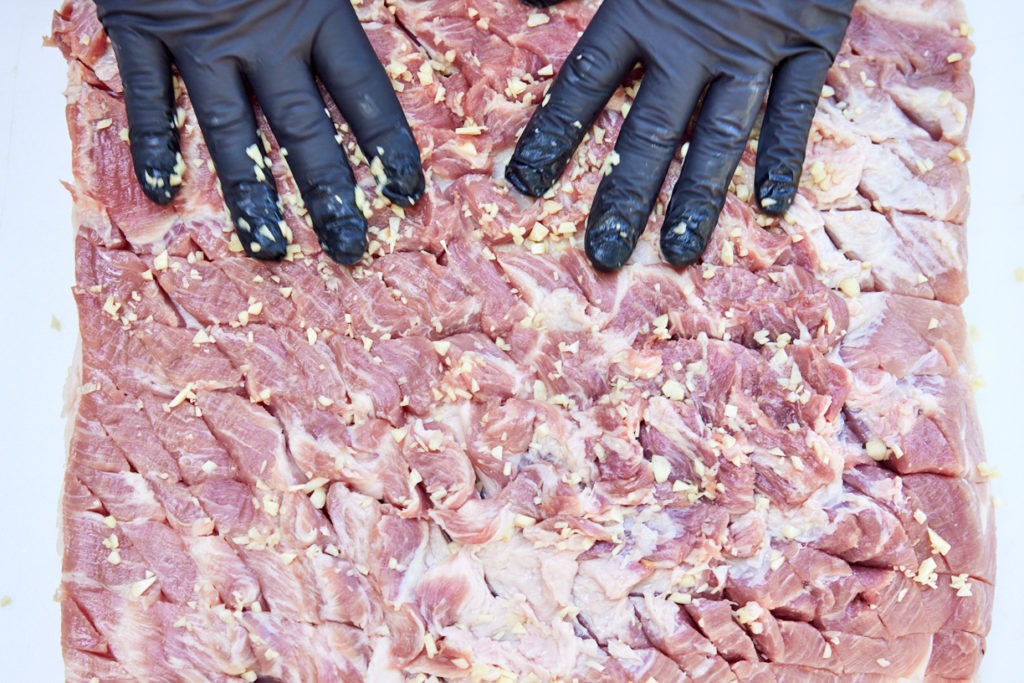
And speaking of seasonings, we should talk about what goes into this thing. Joshua Bousel, writing for Serious Eats, says that it’s good enough with just some garlic paste for seasoning, and he’s not wrong. But to up the wow factor—without losing tradition—we also love sliced red onion (or shallot) and crushed lemongrass. Roll them all inside, tie it up, and get it cooking—the smell alone is worth the extra seasoning.
Cooking Lechon Pork Belly Without a Spit: Critical Temperatures
You may be thinking that this dish seems out of reach. You might not have a spit, for instance. Well, we didn’t use one, and you don’t need to either. What you do need is a grill that can be set up for three-zone cooking. Yes, three! Bank the coals on the left and right of the grill, making a zone for indirect cooking right down the middle. Place a disposable aluminum tray in that zone, and set up the air probe for your Smoke X2™ above the pan and use your Billows™ BBQ Control Fan. The rolled pork belly goes above the tray between two hot zones, and the Billows/Smoke X2 combo keeps the air in the indirect cooking zone at 350°F (177°C). Then set a timer, like TimeStick®, for 15 minutes, put the lid on the grill, and cook. When the timer sounds, turn the pork a quarter turn and reset the timer. Repeat this turning, every 15 minutes, for about 2–3 hours.
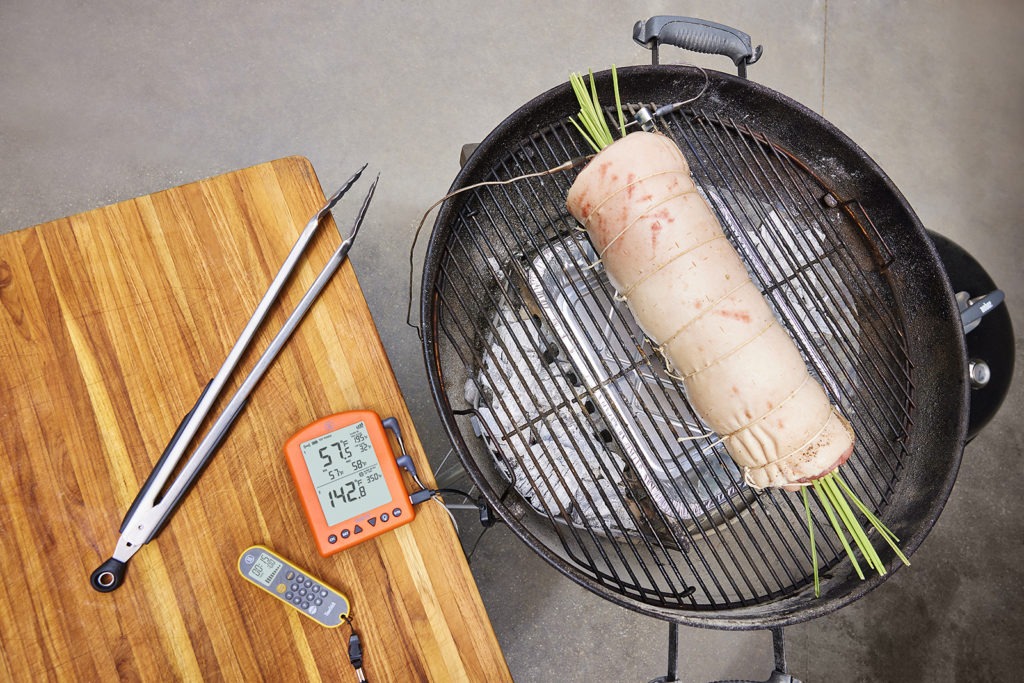
Lechon pork belly doneness temp
Two to three hours is a wide range; how do you know when it’s done? With your Smoke X2, of course. Insert the included penetration probe down the center of the roll of meat so that it is hanging out one end. Now whenever you turn the meat, you can just adjust the probe slightly so that it maintains its orientation. When the meat reaches its pull temperature of 195°F (91°C), it’s ready to take off the heat. As we have discussed many times over, collagen doesn’t really start to melt down quickly until it reaches 170°F (77°C). By the time the pork belly gets up to 195°F (91°C), it should be very tender without being so loose that it falls apart at the merest touch. Of course, you should verify that internal temperature with your Thermapen® ONE to make sure it really is up to temp. If you don’t see anything lower than 195°F (91°C), you’re good to go.
Lechon Pork Belly: Crispy Skin vs “Crackling”
The skin of the pork belly will be quite crunchy when the belly comes up to temp, not to mention a beautiful mahogany color. And that crunchy skin is part of the traditional presentation. But we went one non-traditional step further. Crunchy skin is fine, but crispy, bubbly, pork-rindy skin is even better!
To make the skin really bubble and crisp, it has to be well rendered, with collagen-locked water readily available for steam transformation and expansion. That’s not a problem: 150 minutes in a 350°F (177°C) grill will have accomplished that. But it also needs a blast of high heat—no worries! we’ve got two beds of live coals at our disposal.
Remove the pan from the middle of the grill (save those juices to add to your rice, if you like) and combine the coals from both sides into one low mass in the center. Now remove your penetration and air probes and start rotating the pork belly over the intense, direct heat. Let it sit for a few moments, then turn it. Sit, turn, sit, turn, as you watch the skin rapidly bubble up and puff. Be aware, though, that there will be flare-ups from the coal bed and you can scorch the skin if you don’t keep it moving often enough. It takes just a few minutes to crisp the whole belly, and it is well worth the vigilance and slight effort!
Of course, you needn’t crisp it, and you can have crunchy skin, but to the uninitiated, the crisp, puffy skin is often better. We sure loved it!
The deliciousness of this dish is beyond disproportionate to the effort expended in making it. Yes, turning it every 15 minutes is a thing you have to do (you can easily make that 20 instead, and we suspect even 30 would do the trick), but it’s pretty bare effort compared to some of the cooks we enjoy. The end result is knee-weakeningly good. With the thermal advantage you get from Smoke X2, Billows, and Thermapen ONE, you can try this and know that even your first go-round is going to come out perfectly. Try it soon, you’ll be glad you did.
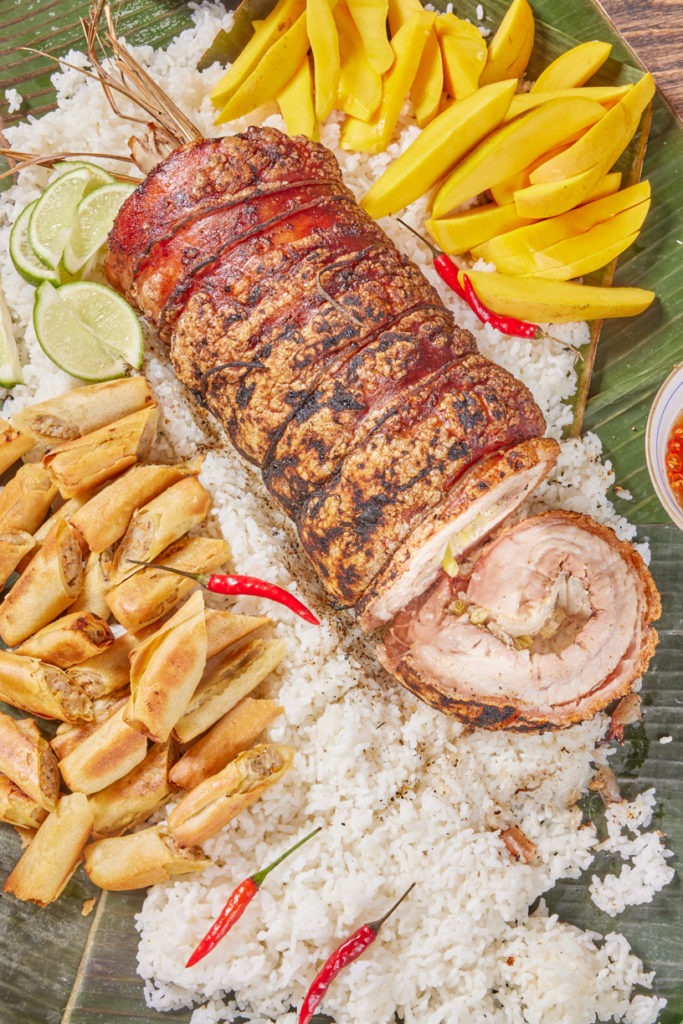
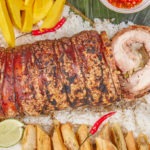
Lechon Liempo: Perfect Filipino Crispy Stuffed Pork Belly
Description
Lechon pork belly with crispy skin, adapted from sources including Serious Eats and Panlasang Pinoy.
Ingredients
- 1 boneless pork belly, skin ON, about 6 lb
- Salt and freshly ground black pepper
- 6 cloves fresh garlic, minced
- 1 medium red onion, thinly sliced
- 4 stalks fresh lemongrass, tough outer leaves removed, root end trimmed off (or about 1/3 chopped, frozen lemongrass)
Instructions
- With the skin-side up, use the tip of a very sharp knife to poke through the skin of the pork belly all over. This will help the fat render and will self-baste the dish.
- Flip the belly over and score the flesh deeply with the sharp knife.
- Rub the minced garlic all over the meat, pressing it into the cuts you made.
- Season the meat side of the belly generously with salt and pepper.
- Scatter the onions all over the surface of the meat.
- Crush the lemongrass talks with the blunt back of a knife. Lay half of them with their root-ends against one short side of the belly, and the other half against the other side. If you want to trim them so that they don’t stick out, you can, but it makes a nice presentation to leave the excess leaves on.
- Roll the belly along its long axis.
- For the tightest roll, use a few metal skewers before you tie. Insert the skewer through the first layer of belly, pointing slightly toward yourself, then wedge it against the second layer, pull back on it, and push it through, leveraging the roll closed. (Make a small slit with a knife if needed to push the skewer through the first layer.) Then go through with butcher’s twine and tie tightly between each skewer.
- Preheat your grill with two hot zones and a “cool” zone in the middle. Put an aluminum pan in the middle and set up the air probe from your Smoke X2 over the cooler zone. Attach your Billows BBQ Control Fan to the grill and set the air temp to 350°F (177°C).
- Place the pork in the indirect zone and insert a probe down the center axis into the pork. Set the high-temp alarm for 195°F (91°C). Close the lid and set a timer for 15 minutes.
- When the timer sounds, open the grill and turn the belly 90° along its axis. Close the grill and continue to cook, setting another 15 minute timer. Continue in this manner until the high-temp alarm sounds.
- When the alarm sounds, use your Thermapen ONE to verify that you see no temp lower than 195°F (91°C).
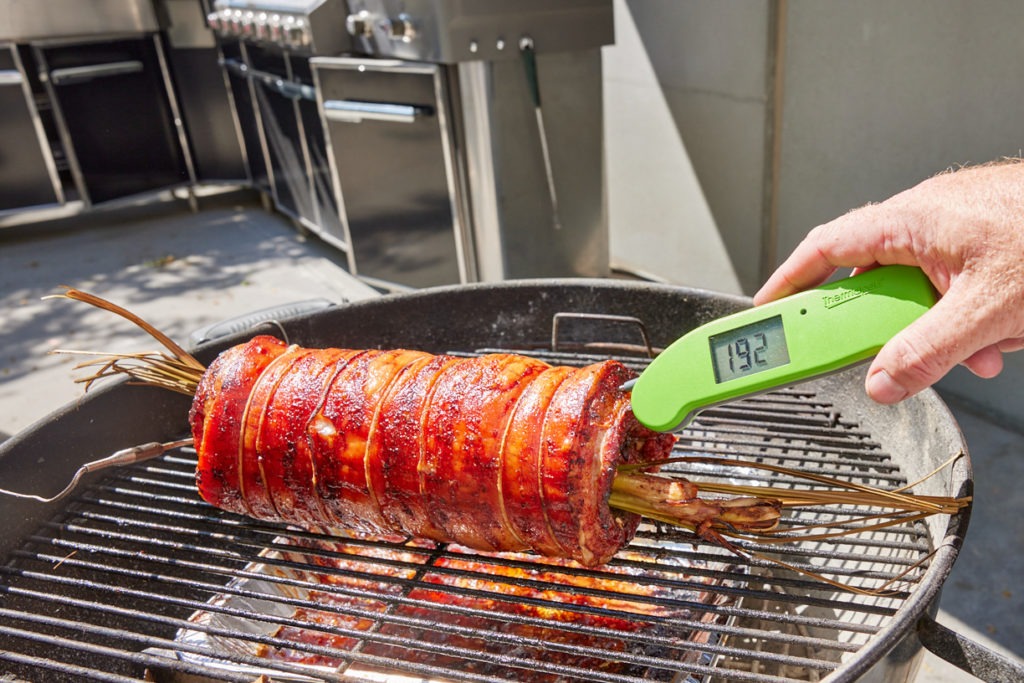
- Move the roll off the grill while you rearrange the charcoal into one low, flat, central pile. Remove the probes from the meat and the grill.
- Place the lechon back on the grill over the coals. Watch it carefully and when you see it start to bubble, roll it/turn it. You want to carefully make the whole skin crispy and bubbly.
- Remove the pork from the grill to a large bed of rice for serving.
- Slice the pork and serve it up!
Shop now for products used in this post:


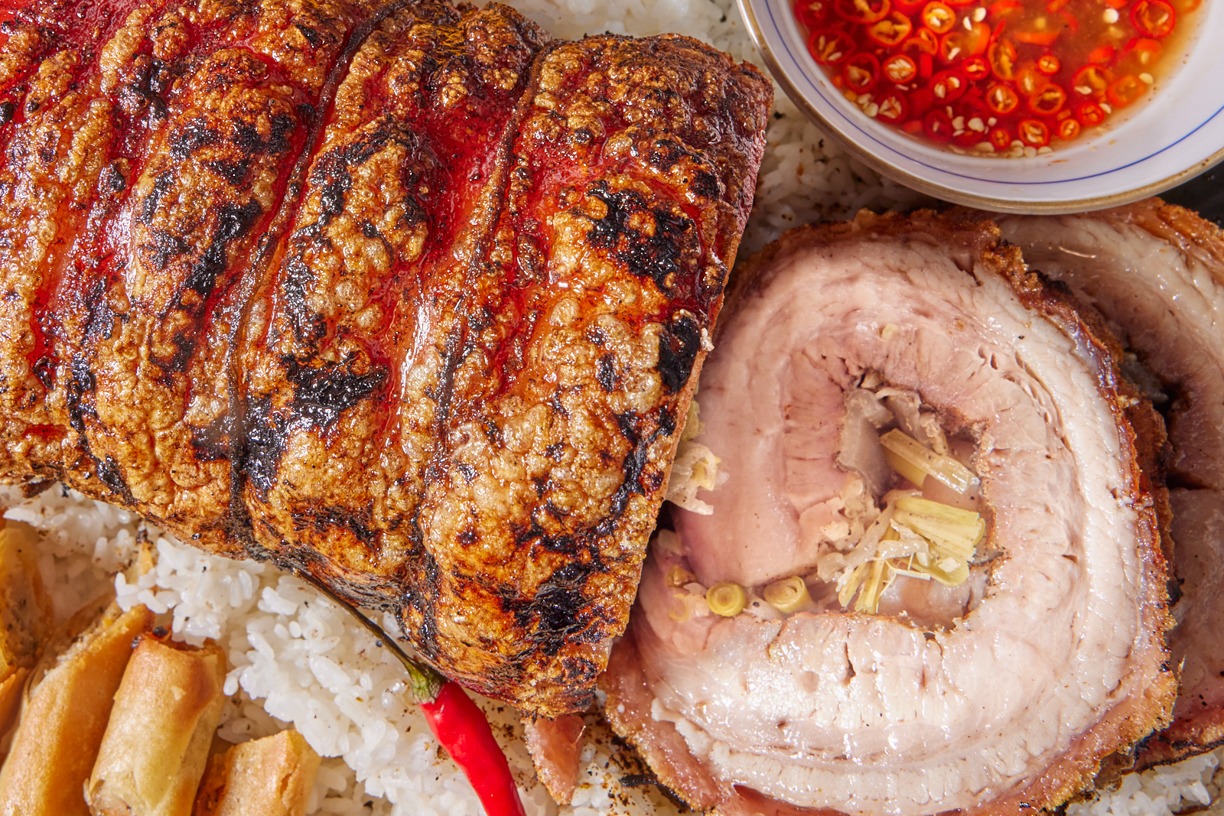
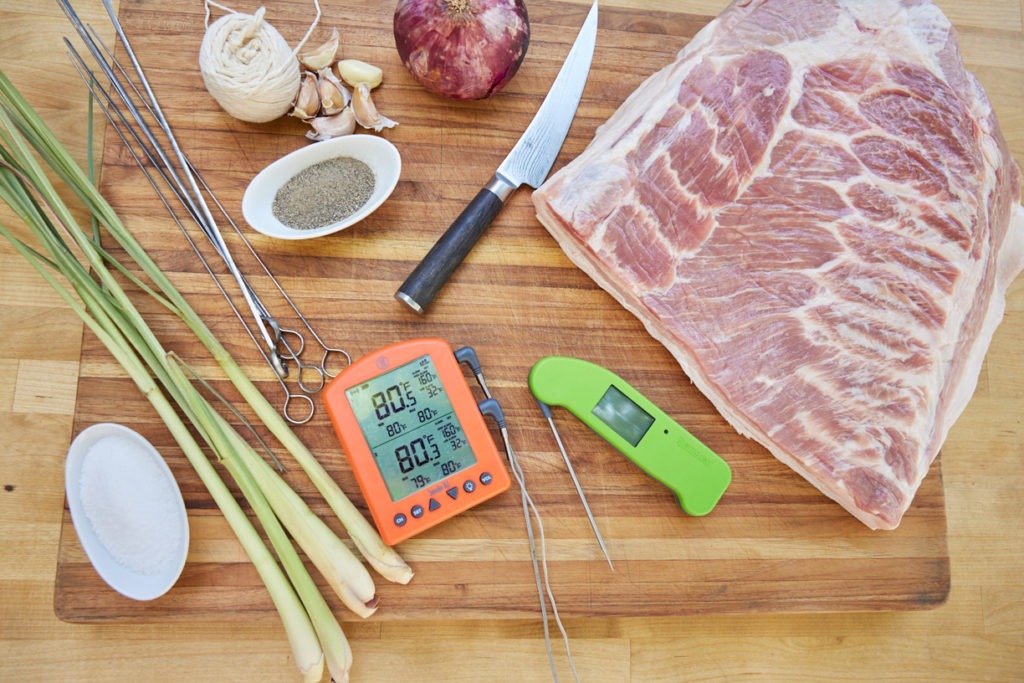
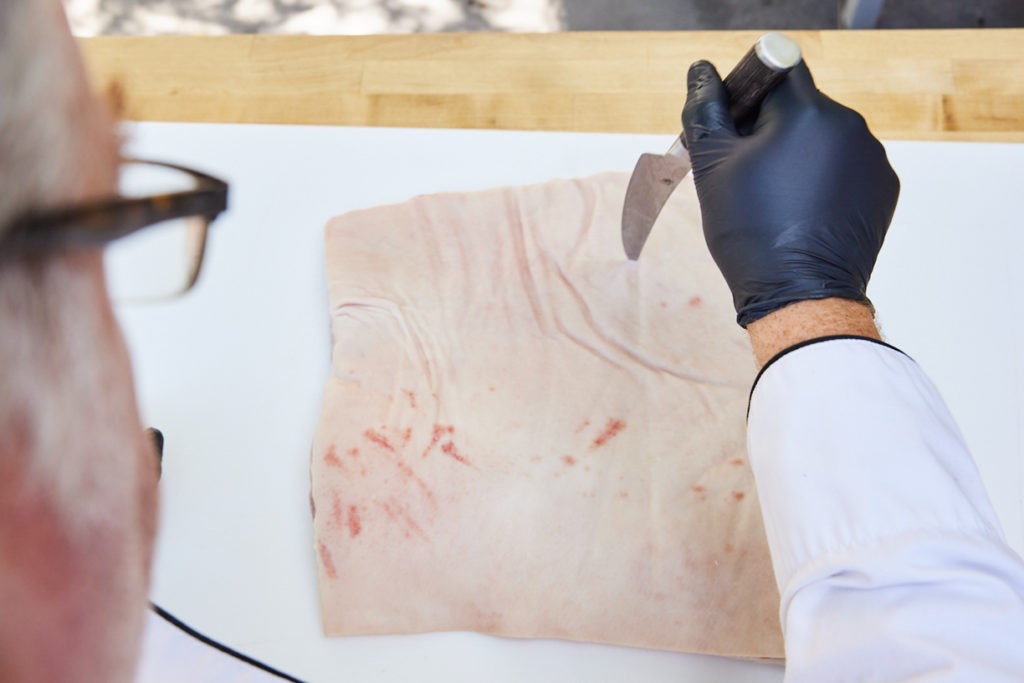
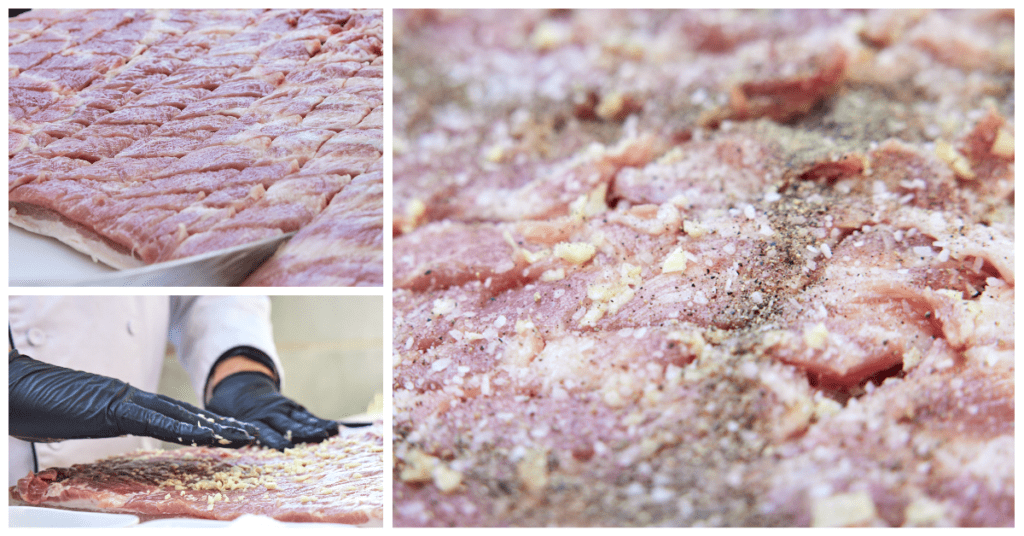
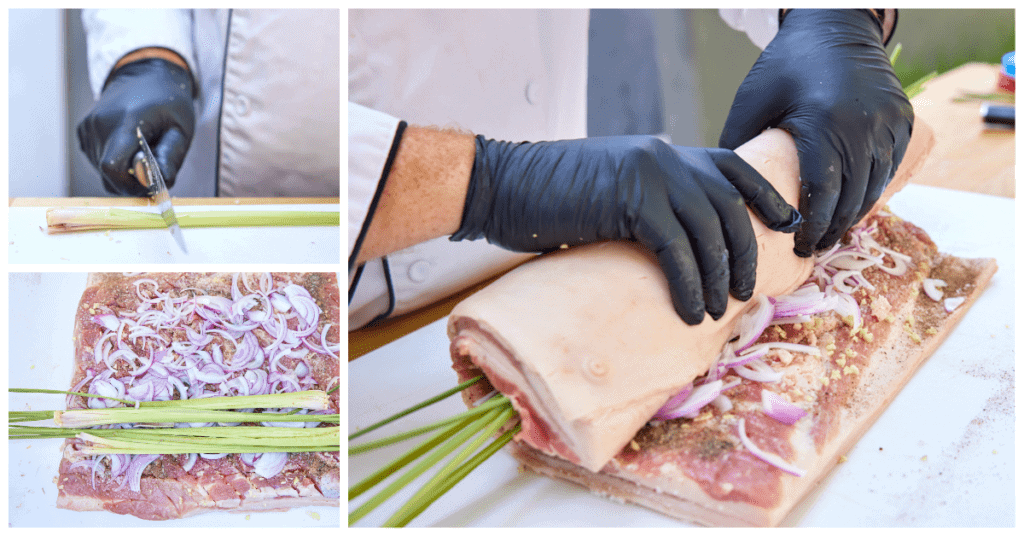
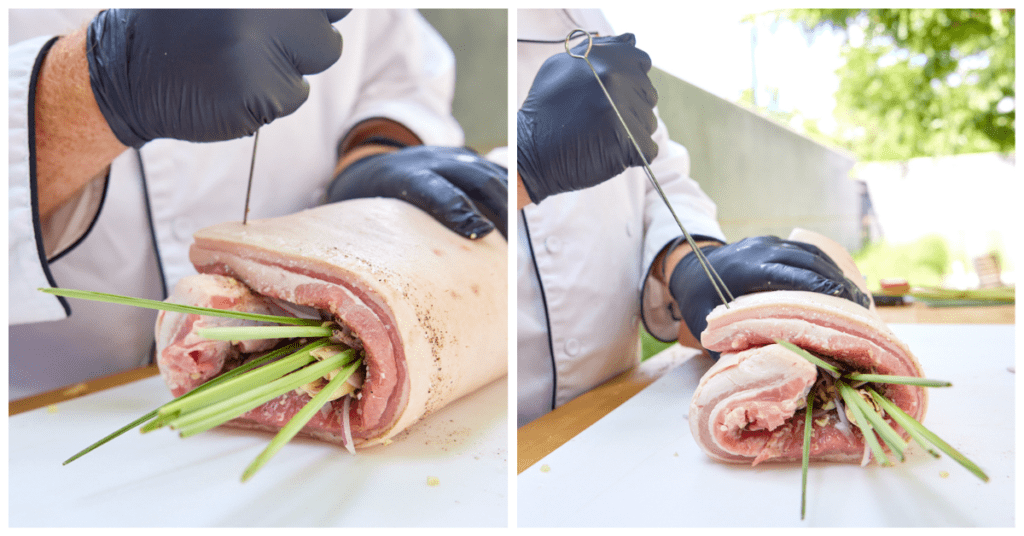
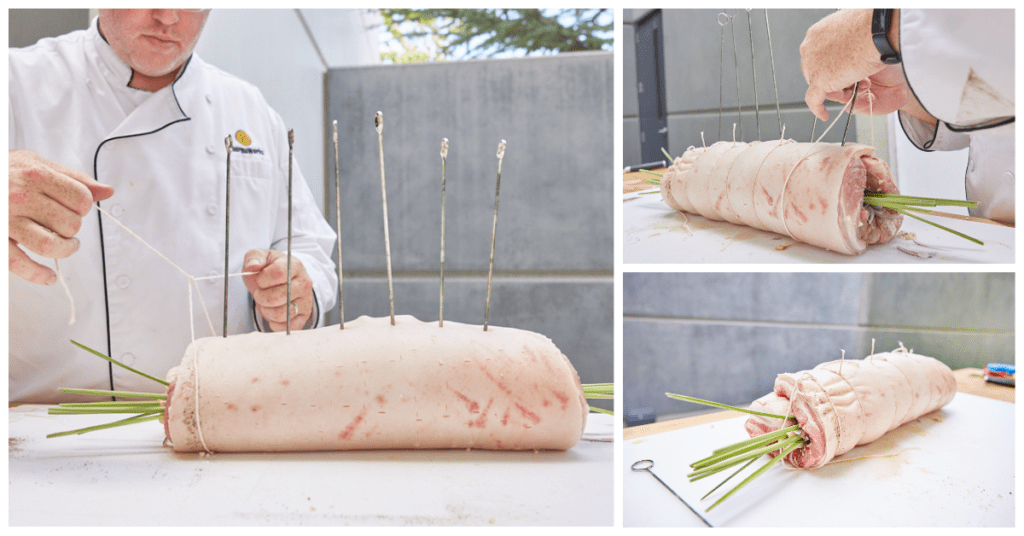
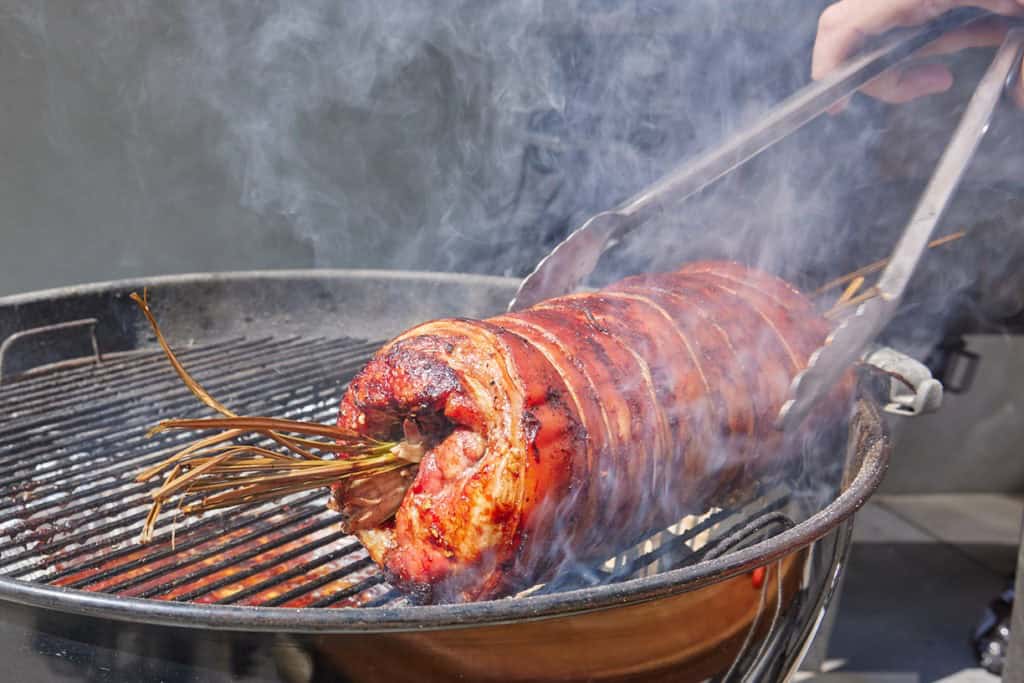
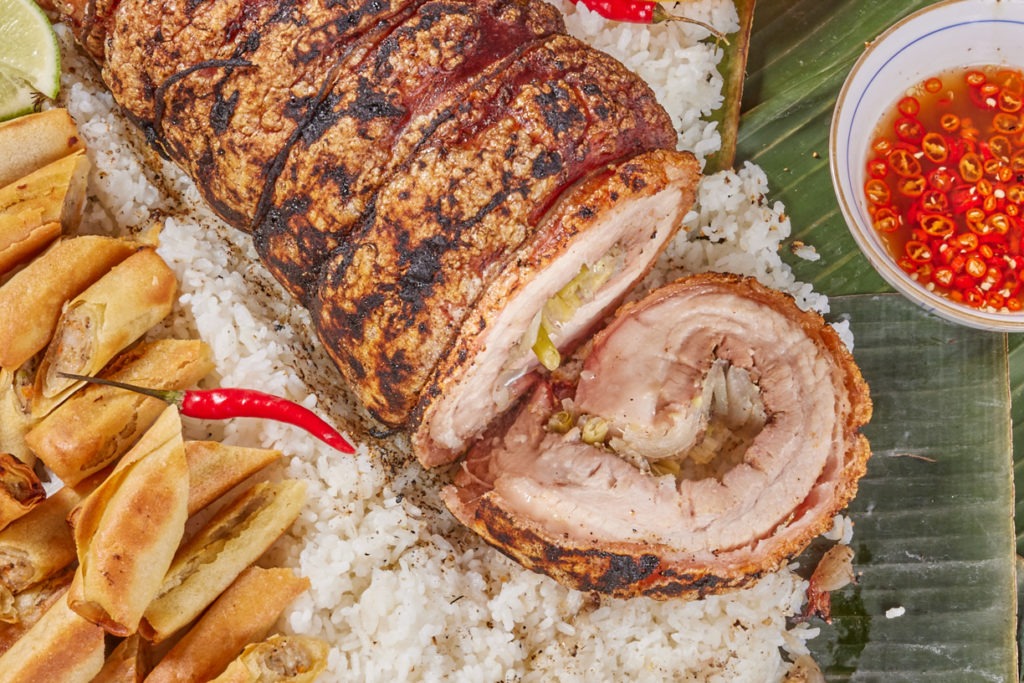

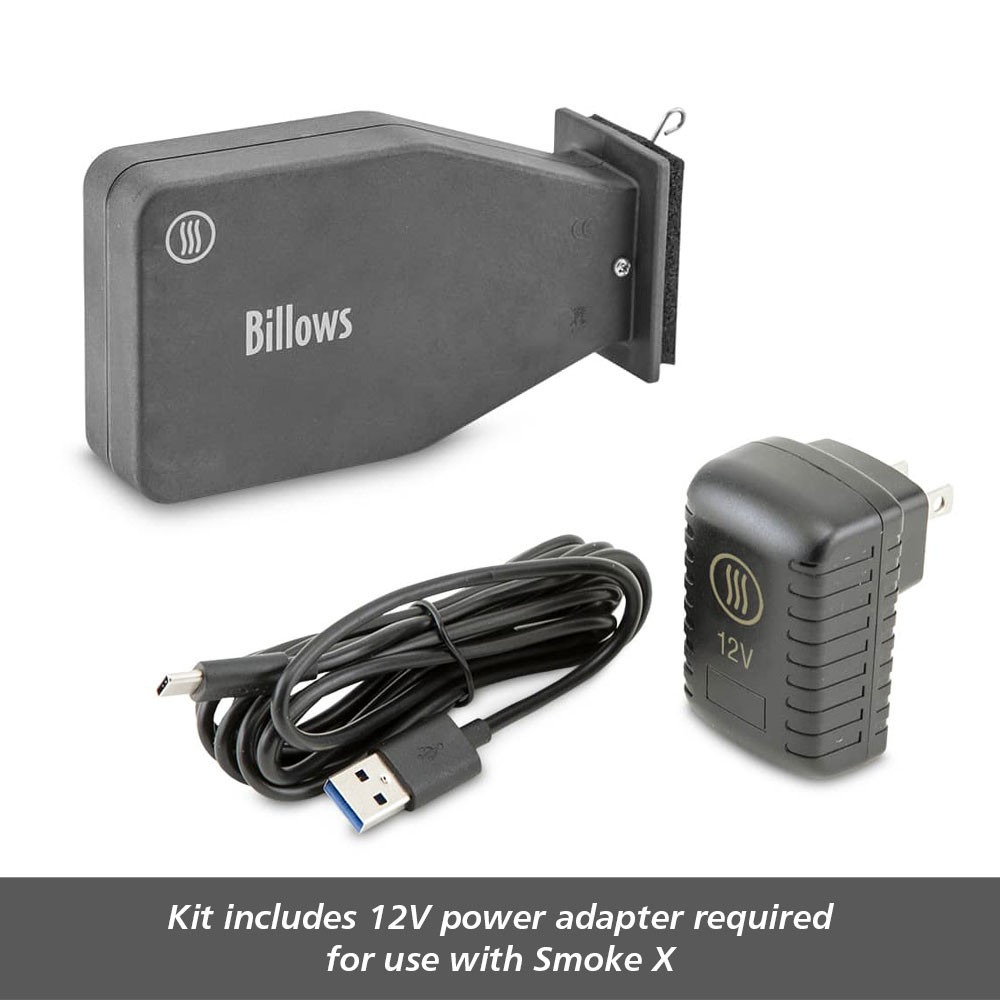

Very interesting! This is essentially the Italian “porchetta” but instead of fennel and crushed red pepper, they use red onions and lemongrass as the aromatics in the Phillipenes 😎 always cool to see how people in different parts of the world treat the same cut of meat!
Lechon Filipino Pork Belly!! Where do you connect the bellows fan to the charcoal grill??
For a kettle like we used, it’s a little complex. We drilled a hole in the side using a step drill, the put a threaded pip through it, secured it with nuts on each side, and threaded another pipe onto it that could accept the mounting kit. It’s easier on kamado-style charcoal grills, but if a kettle is what you have, it’s well worth the effort.
What are your thoughts about trying this with a “no skin on” pork belly slab?
Obviously you won’t get the crackling skin around outside aspect but curious if similar principles would apply.
Also, if one had a back infrared rotisserie component for grill, thinking that may be a way to try and cook a rolled pork belly slab as well following this method. Or…would there be a different process you’d suggest? (drip pan underneath meat for sure, obviously)
I’m not sure how the skinless version would go. I’d worry about the excess juice. I’d worry about burning the fat surface a little. But if you were using the back infrared rotisserie (which is a great idea, but you’ll have to spot-check your temps with Thermapen ONE rather than leaving a probe in it to get twisted up), I might give it a try. Yes, use a drip pan.
On a spit, it could work, I wouldn’t try our exact method here, on the grill, with a skinless version.
good
What type of grill do you need and where to buy? Thanks
You can use almost any type of grill. This one happened to be cooked on a Weber Kettle grill.
Is there anyway to prepare this dish in the oven? I have made crispy pork belly in my oven with three temperature timings. And in the end, I have a succulent tender flesh, fat rendered, puffed up crispy pork belly skin on top.
I love how you roll up the pork belly.
Tammy,
Good question! And I’m not 100% sure. I think you could do it. Put it on a cooling rack set into a baking sheet, put it in a 350°F oven and cook, turning every half hour. Then you’ll set up your broiler and crisp it from above, turning as it bubbles up. If your oven won’t run the broiler with the door open, you could take the whole thing out and heat your oven as hot as it will go, then put it back in and let the extra hot oven try to crisp it. I think it should work, but it may take a little experimentation. Good luck!